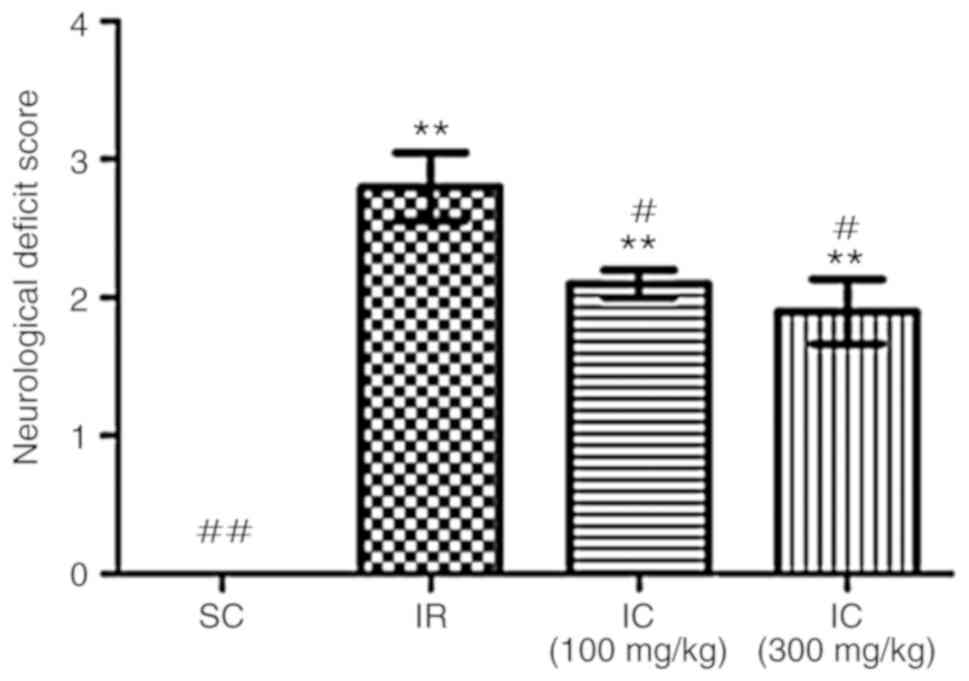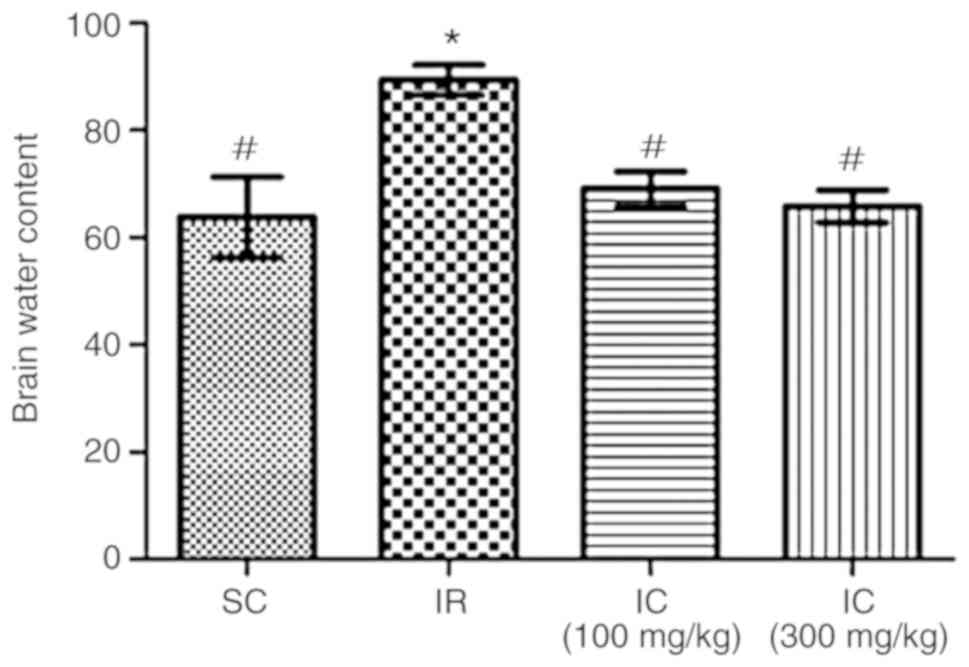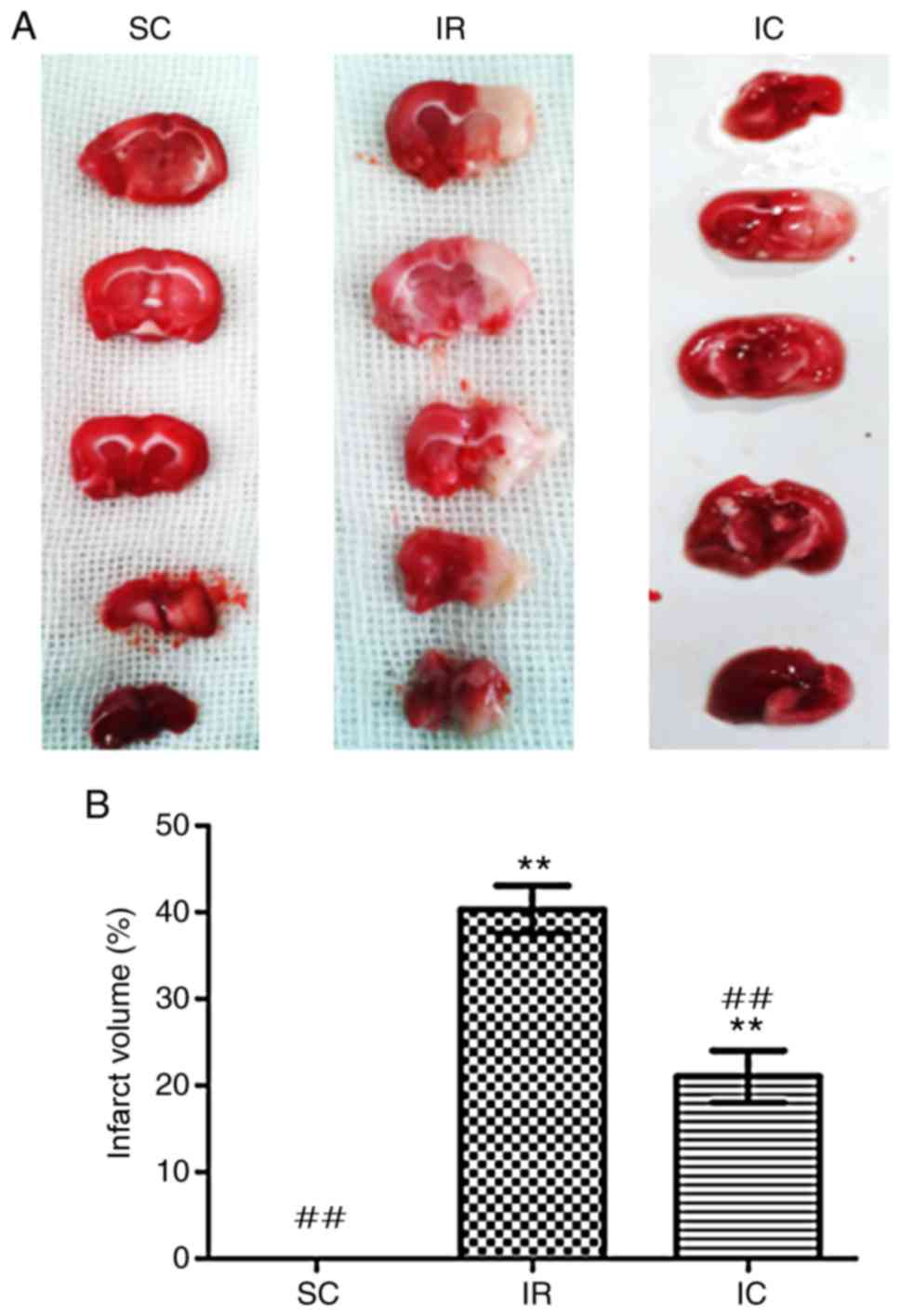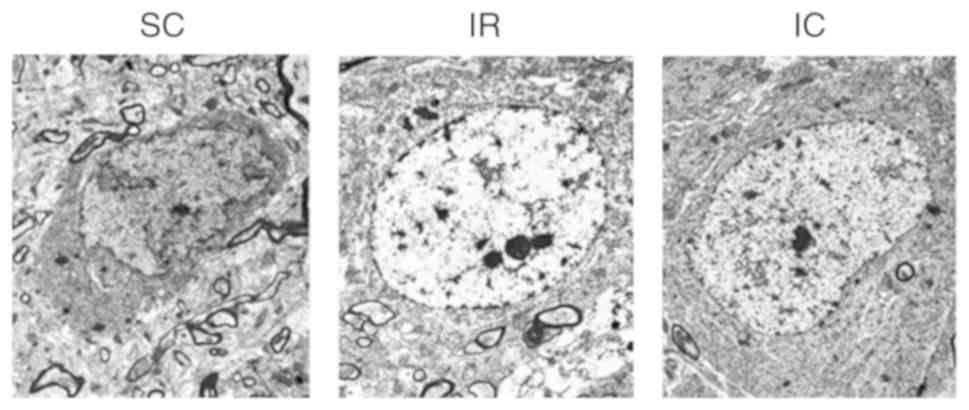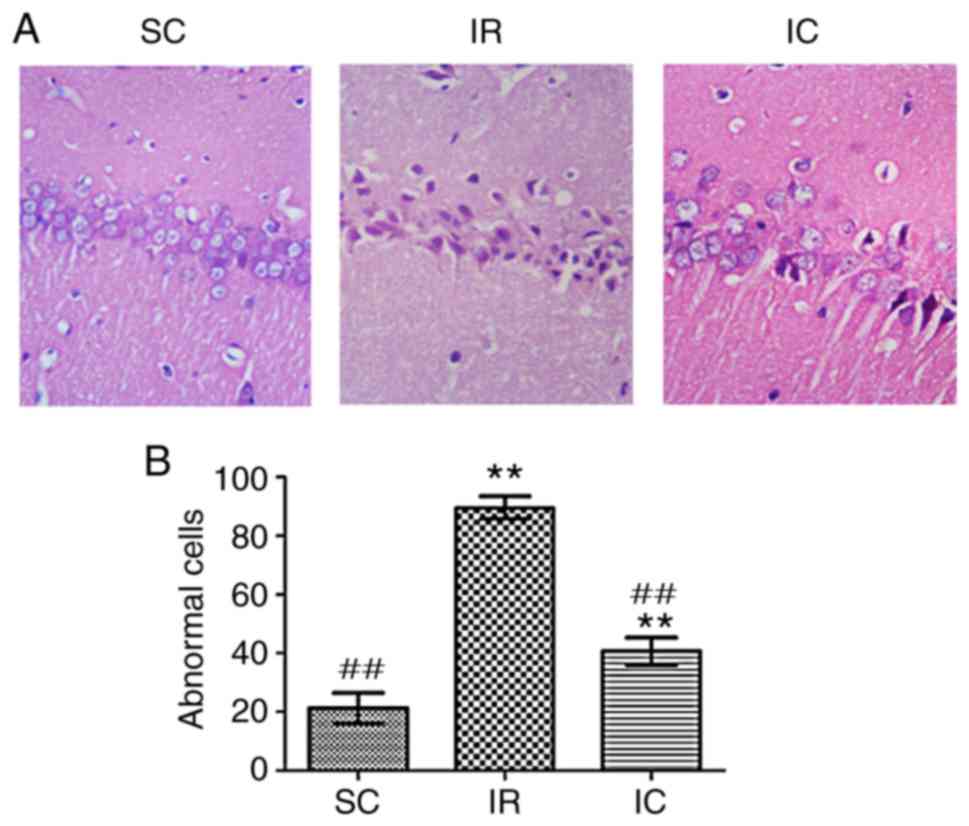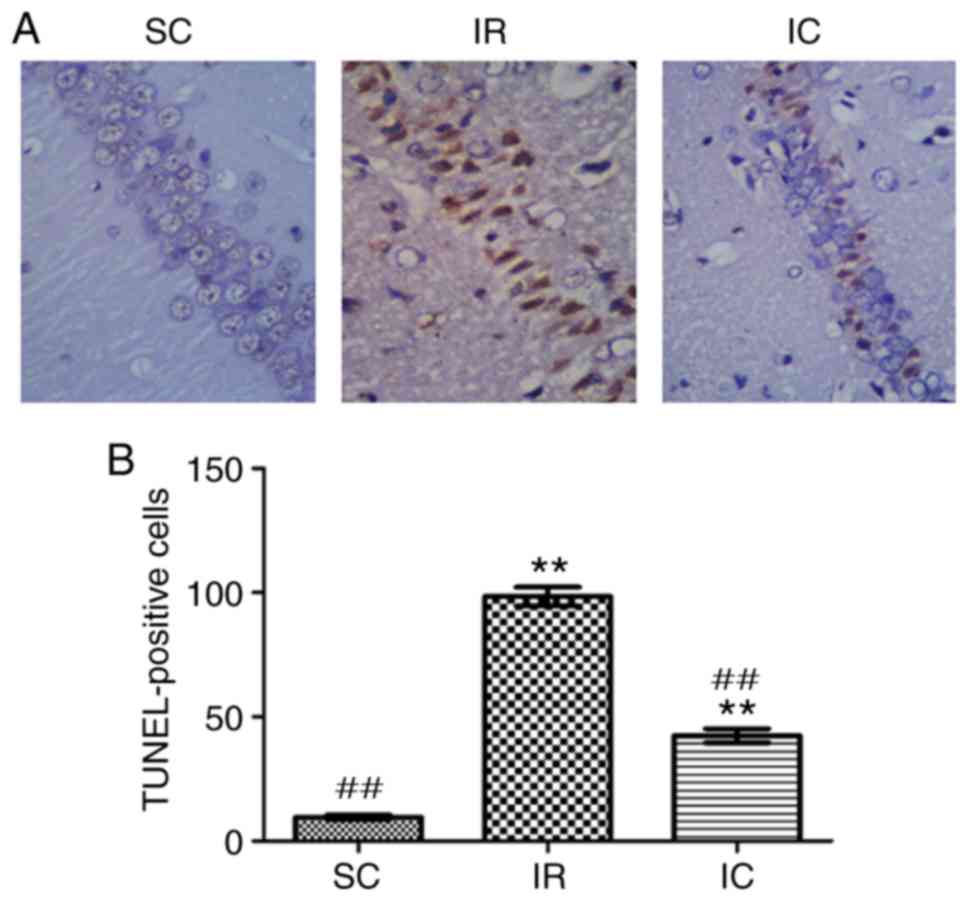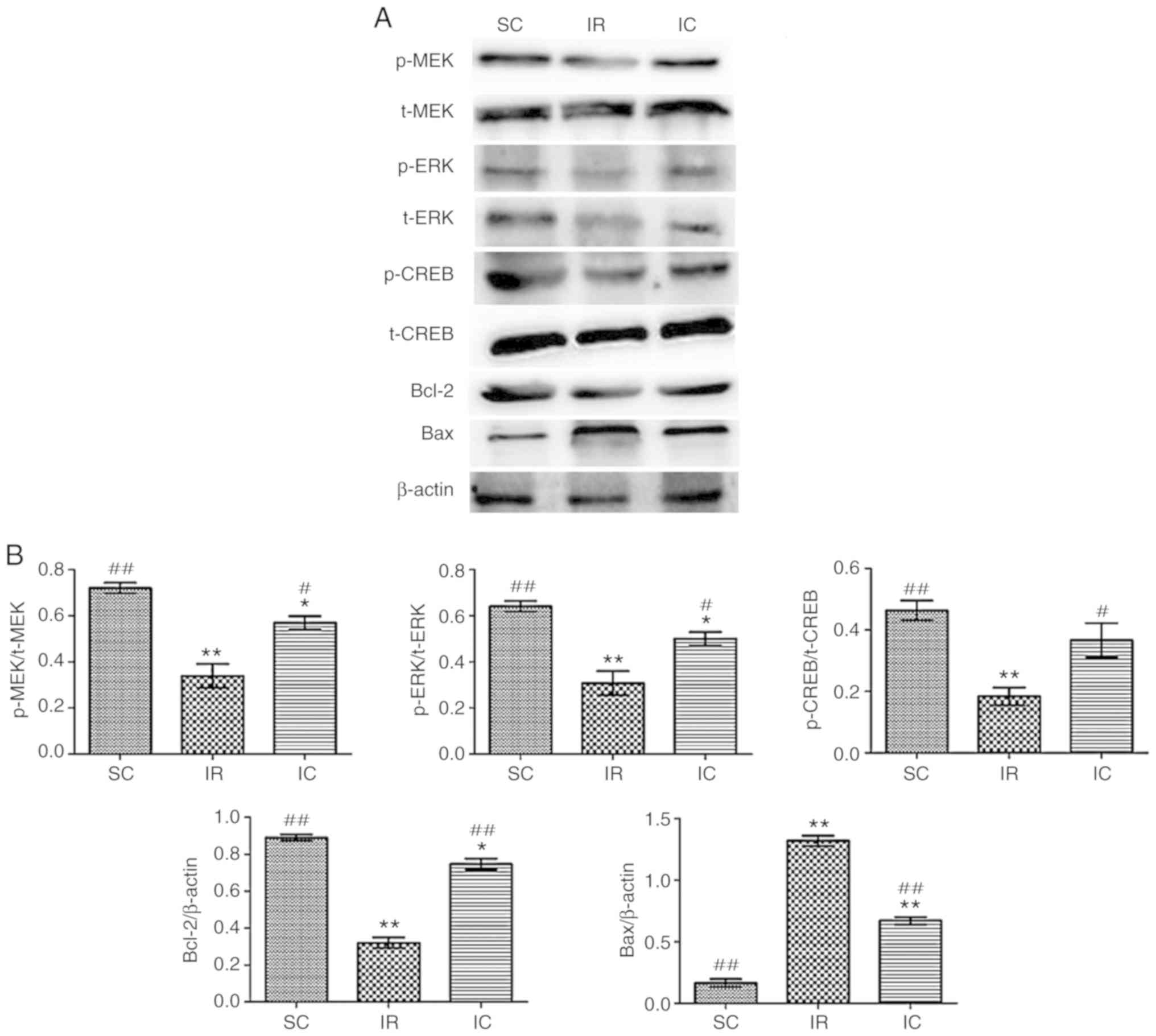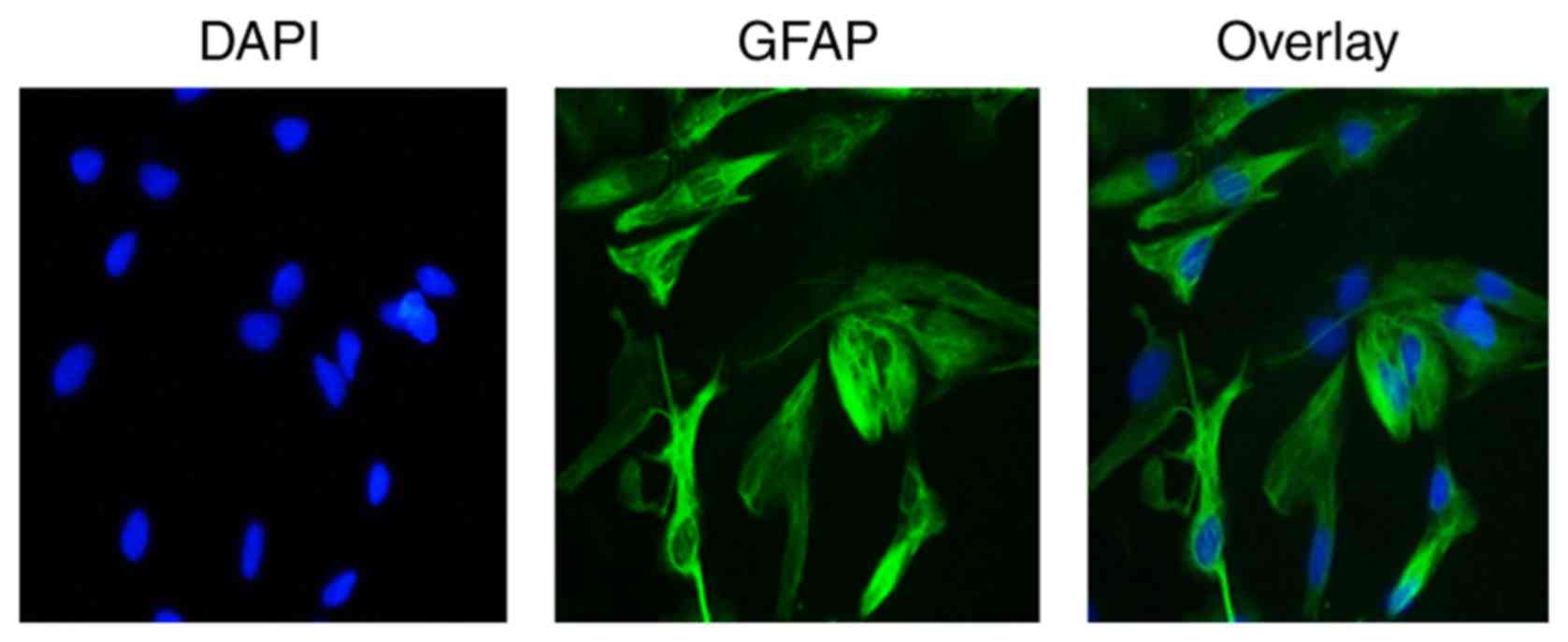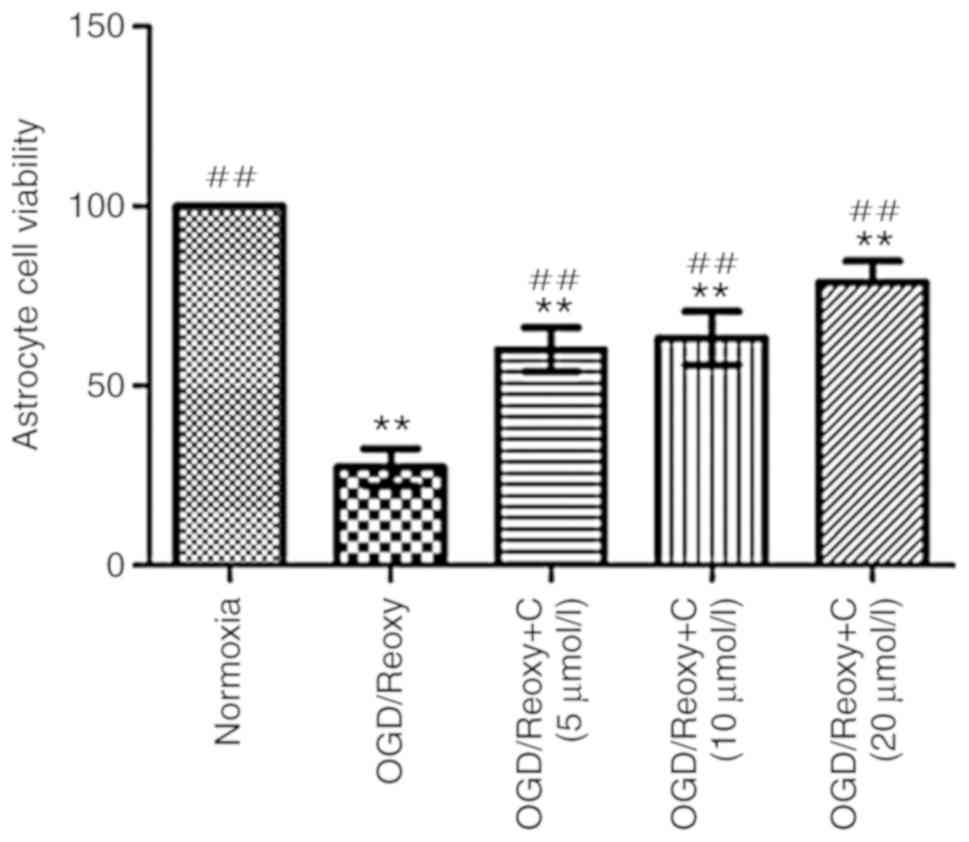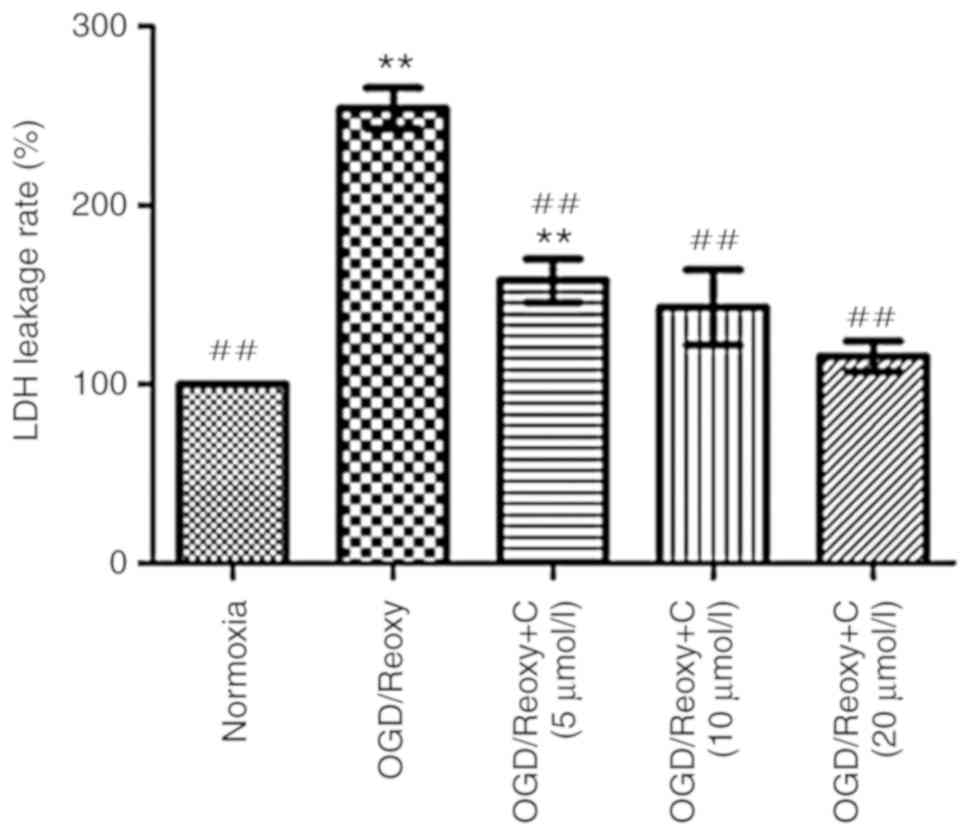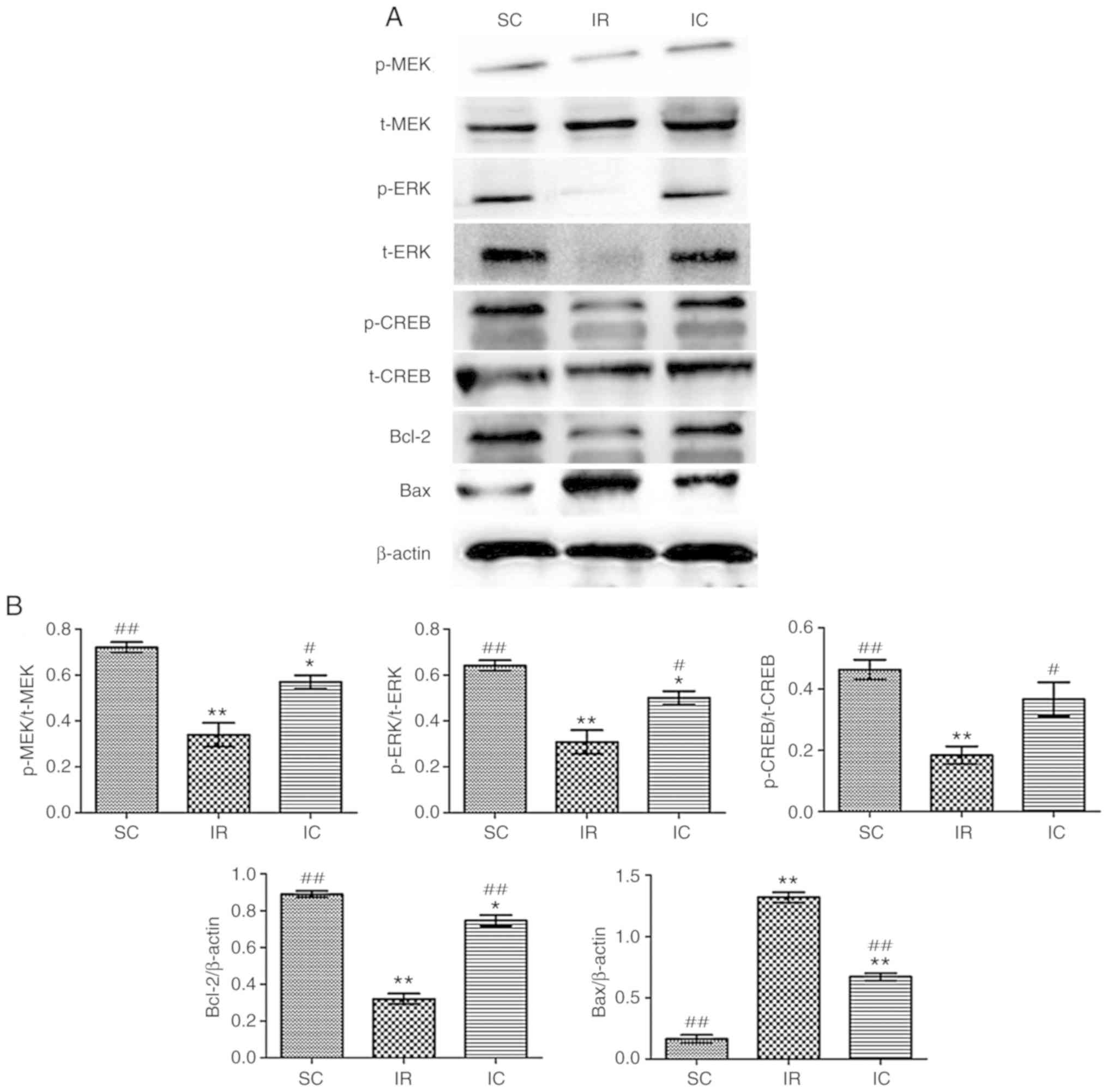|
1
|
Durai Pandian J, Padma V, Vijaya P, Sylaja
PN and Murthy JM: Stroke and thrombolysis in developing countries.
Int J Stroke. 2:17–26. 2007. View Article : Google Scholar
|
|
2
|
Moskowitz MA, Lo EH and Iadecola C: The
science of stroke: Mechanisms in search of treatments. Neuron.
67:181–198. 2010. View Article : Google Scholar : PubMed/NCBI
|
|
3
|
Benjamin EJ, Virani SS, Callaway CW,
Chamberlain AM, Chang AR, Cheng S, Chiuve SE, Cushman M, Delling
FN, Deo R, et al: Heart disease and stroke statistics-2018 update:
A report from the American heart association statistics committee
and stroke statistics subcommittee. Circulation. 137:e67–e492.
2018. View Article : Google Scholar
|
|
4
|
Fogelholm R: Editorial
comment-Explanations for international trends in stroke mortality.
Stroke. 34:1833–1840. 2003. View Article : Google Scholar
|
|
5
|
Nagahiro S, Uno M, Sato K, Goto S, Morioka
M and Ushio Y: Pathophysiology and treatment of cerebral ischemia.
J Med Invest. 45:57–70. 1998.PubMed/NCBI
|
|
6
|
Bates B, Choi JY, Duncan PW, Glasberg JJ,
Graham GD, Katz RC, Lamberty K, Reker D and Zorowitz R; US
Department of Defense and Department of Veterans Affairs: Veterans
affairs/department of defense clinical practice guideline for the
management of adult stroke rehabilitation care: Executive summary.
Stroke. 36:2049–2056. 2005. View Article : Google Scholar : PubMed/NCBI
|
|
7
|
Grotta J and Marler J: Intravenous rt-PA:
A tenth anniversary reflection. Surg Neurol. 68:S12–S16. 2007.
View Article : Google Scholar : PubMed/NCBI
|
|
8
|
Pan J, Konstas AA, Bateman B, Ortolano GA
and Pile-Spellman J: Reperfusion injury following cerebral
ischemia: Pathophysiology, MR imaging, and potential therapies.
Neuroradiology. 49:93–102. 2007. View Article : Google Scholar :
|
|
9
|
Minnerup J, Sutherland BA, Buchan AM and
Kleinschnitz C: Neuroprotection for stroke: Current status and
future perspectives. Int J Mol Sci. 13:11753–11772. 2012.
View Article : Google Scholar : PubMed/NCBI
|
|
10
|
Love S: Apoptosis and brain ischaemia.
Prog Neuropsy chopharmacol Biol Psychiatry. 27:267–282. 2003.
View Article : Google Scholar
|
|
11
|
Sugawara T, Fujimura M, Noshita N, Kim W,
Saito A, Hayashi T, Narasimhan P, Maier CM and Chan Pak H: Neuronal
death/survival signaling pathways in cerebral ischemia. NeuroRx.
1:17–25. 2004. View Article : Google Scholar
|
|
12
|
Zhao Y, Gui W, Niu F and Chong S: The MAPK
signaling pathways as a novel way in regulation and treatment of
parasitic diseases. Disease. 7:E92019. View Article : Google Scholar
|
|
13
|
Selcher JC, Atkins CM, Trzaskos JM, Paylor
R and Sweatt JD: A necessity for MAP kinase activation in mammalian
spatial learning. Learn Mem. 6:478–490. 1999. View Article : Google Scholar : PubMed/NCBI
|
|
14
|
Cheng CY, Lin JG, Su SY, Tang NY, Kao ST
and Hsieh CL: Electroacupuncture-like stimulation at baihui and
dazhui acupoints exerts neuroprotective effects through activation
of the brain-derived neurotrophic factor-mediated
MEK1/2/ERK/1/2/p90RSK/bad signaling pathway in mild transient focal
cerebral ischemia in rats. BMC Complement Altern Med. 14:922014.
View Article : Google Scholar
|
|
15
|
Li J, Li X, Bi H and Li B: The
MEK/ERK/CREB signaling pathway is involved in atrazine induced
hippocampal neurotoxicity in sprague dawley rats. Ecotoxicol
Environ Saf. 170:673–681. 2019. View Article : Google Scholar
|
|
16
|
Zuo H, Lin T, Wang W, Peng R, Wang S, Gao
Y, Xu X, Zhao L, Wang S and Su Z: RKIP regulates neural cell
apoptosis induced by exposure to microwave radiation partly through
the MEK/ERK/CREB pathway. Mol Neurobiol. 51:1520–1529. 2014.
View Article : Google Scholar : PubMed/NCBI
|
|
17
|
Zhao X, Xu Y, Zhao Q, Chen CR, Liu AM and
Huang ZL: Curcumin exerts antinociceptive effects in a mouse model
of neuropathic pain: Descending monoamine system and opioid
receptors are differentially involved. Neuropharmacology.
62:843–854. 2012. View Article : Google Scholar
|
|
18
|
Kim KT, Kim MJ, Cho DC, Park SH, Hwang JH,
Sung JK, Cho HJ and Jeon Y: The neuroprotective effect of treatment
with curcumin in acute spinal cord injury: Laboratory
investigation. Neurol Med Chir. 54:387–394. 2014. View Article : Google Scholar
|
|
19
|
Gazal M, Valente MR, Acosta BA, Kaufmann
FN, Braganhol E, Lencina CL, Stefanello FM, Ghisleni G and Kaster
MP: Neuroprotective and antioxidant effects of curcumin in a
ketamine-induced model of mania in rats. Eur J Pharmacol.
724:132–139. 2014. View Article : Google Scholar : PubMed/NCBI
|
|
20
|
Longa EZ, Weinstein PR, Carlson S and
Cummins R: Reversible middle cerebral artery occlusion without
craniectomy in rats. Stroke. 20:84–91. 1989. View Article : Google Scholar : PubMed/NCBI
|
|
21
|
Nilsson M, Thorlin T, Blomstrand F and
Hansson E: The star-shaped cells. Astrocytes are involved in the
pathogenesis and progress of neurological diseases. Lakartidningen.
97:3604–3610. 2000.PubMed/NCBI
|
|
22
|
Ridet JL, Malhotra SK, Privat A and Gage
FH: Reactive astrocytes: Cellular and molecular cues to biological
function. Trends Neurosci. 20:570–577. 1997. View Article : Google Scholar
|
|
23
|
Fu J, Xue R, Gu J, Xiao Y, Zhong H, Pan X
and Ran R: Neuroprotective effect of calcitriol on
ischemic/reperfusion injury through the NR3A/CREB pathways in the
rat hippocampus. Mol Med Rep. 8:1708–1714. 2013. View Article : Google Scholar : PubMed/NCBI
|
|
24
|
Jiang Z, Zhang Y, Chen X, Lam PY, Yang H,
Xu Q and Yu AC: Activation of Erk1/2 and Akt in astrocytes under
ischemia. Biochem Biophys Res Commun. 294:726–733. 2002. View Article : Google Scholar : PubMed/NCBI
|
|
25
|
Zhou B, Chen D, Xu H and Zhang X:
Proliferation of rabbit chondrocyte and inhibitioof IL-1β-induced
apoptosis through MEK/ERKsignaling by statins. In Vitro Cell Dev
Biol Anim. 53:124–131. 2017. View Article : Google Scholar
|
|
26
|
Yu Z, Cai M, Li X, Zhang J, Wu T, Yang F,
Zhu W, Xiang Y, Zhang W, Xiang J and Cai D: Neuroprotective effects
of Tongxinluo on focal cerebral ischemia and reperfusion injury
inrats associated with the activation of the MEK1/2/ERK1/2/p90RSK
signaling pathway. Brain Res. 1685:9–18. 2018. View Article : Google Scholar : PubMed/NCBI
|
|
27
|
Huang EJ and Reichardt LF: Neurotrophins:
Roles in neuronal development and function. Annu Rev Neurosci.
24:677–736. 2001. View Article : Google Scholar : PubMed/NCBI
|
|
28
|
Marinissen MJ and Gutkind JS:
G-protein-coupled receptors and signaling. Networks: Emerging
paradigms. Trends Pharmacol Sci. 22:368–376. 2001. View Article : Google Scholar : PubMed/NCBI
|
|
29
|
Weeber EJ and Sweatt JD: Molecular
neurobiology of human cognition. Neuron. 33:845–848. 2002.
View Article : Google Scholar : PubMed/NCBI
|
|
30
|
Sakamoto K, Karelina K and Obrietan K:
CREB: A multifaceted regulator of neuronal plasticity and
protection. J Neurochem. 116:1–9. 2011. View Article : Google Scholar
|
|
31
|
Lipton P: Ischemic cell death in brain
neurons. Physiol Rev. 79:1431–1568. 1999. View Article : Google Scholar : PubMed/NCBI
|
|
32
|
Brambrink AM, Schneider A, Noga H,
Astheimer A, Gotz B, Korner I, Heimann A, Welschof M and Kempski O:
Tolerance-Inducing dose of 3-nitropropionic acid modulates bcl-2
and bax balance in the rat brain: A potential mechanism of chemical
preconditioning. J Cereb Blood Flow Metab. 20:1425–1436. 2000.
View Article : Google Scholar : PubMed/NCBI
|
|
33
|
Ajami M, Eghtesadi S, Razaz JM, Kalantari
N, Habibey R, Nilforoushzadeh MA, Zarrindast M and Pazoki-Toroudi
H: Expression of Bcl-2 and Bax after hippocampal ischemia in DHA
+EPA treated rats. Neurol Sci. 32:811–818. 2011. View Article : Google Scholar : PubMed/NCBI
|
|
34
|
Zhu Y, Bu Q, Liu X, Hu W and Wang Y:
Neuroprotective effect of TAT-14-3-3epsilon fusion protein against
cerebral ischemia/reperfusion injury in rats. PLoS One.
9:e933342014. View Article : Google Scholar
|
|
35
|
Boucher MJ, Duchesne C, Laine J, Morisset
J and Rivard N: cAMP protection of pancreatic cancer cells against
apoptosis induced by ERK inhibition. Biochem Biophys Res Commun.
285:207–216. 2001. View Article : Google Scholar : PubMed/NCBI
|



